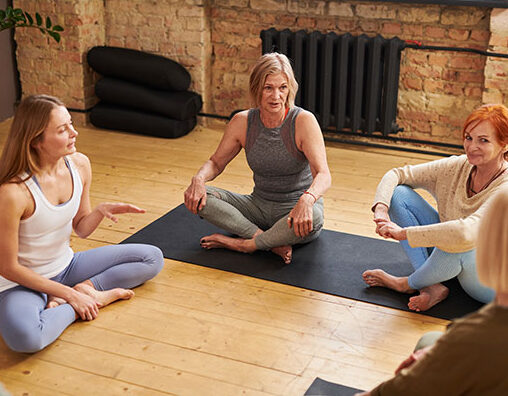What can Feldenkrais® do for you?
It teaches you how to improve your transitional movements. Transitional movements are those which change our orientation; such as coming from lying to sitting, or coming from sitting to standing. Many people find that over time, these transitions become harder to execute smoothly. They may hesitate a moment before getting up from the sofa, they may experience difficulty getting up off the floor. Thankfully, there are numerous Feldenkrais® lessons which teach us that these transitions contain well defined stages of movement. If you know the stages this may reduce the fear of executing them, and that in turn will soothe your nervous system. If your nervous system is relaxed you can focus more easily on what comes next and are mentally prepared for the next stage of the movement. This expectation and knowledge will improve your confidence, the flow of your movements and your balance.
You may want to refer to the video: “Stand up with ease” in the video library to see how this can work for you.
It teaches you how to reduce the effort and yet obtain a better result. In Feldenkrais there is much focus on reducing the effort, on doing less. This is not as easy as it sounds. Most of our lives we use a lot of effort to achieve something. We study hard, we work hard, we try harder. Here, the approach is different. What would happen if you made less of an effort? If you make the movement without strain, if you try and play around with the movement, explore different options, enjoy it even? When you feel joy in a movement there is less tension. Your muscles can relax, your breathing can deepen. Suddenly, surprisingly, we find that by letting go, the movement itself and the experience we are having while we are making the movement is improved.

It can improves your neuroplasticity. The human brain is not a static organ. It can change, develop and even create new neural pathways. How is this done? When you learn something new, when you adapt to the unexpected or when you change the way you do things. Because each Feldenkrais lesson is different from the previous one and they contain non-habitual, non-automatic movements, your body and mind have to adapt to the unknown. Our neurons, just like our bodies, have habits and like to fire on the same pathways again and again so the same synaptic connections keep getting used. Consequently, these pathways deepen and it becomes increasingly difficult to abandon the habit, whether in thinking or in moving. When we do something new and unusual, like attempting to make a non-habitual movement, the neurons need to find new pathways and need to connect differently. This slightly changes the plasticity of our brain and improves our cognition.
It teaches you how to deal with constraints. In our lives we have to deal with constraints all the time. We may have to function, and deliver that project, although we had a bad nights’ sleep or have a terrible headache. Functioning under constraint is difficult and often unpleasant. Feldenkrais uses this insight and in many lessons we introduce small constraints for short periods of time. When we remove the constraints and go back to moving without them, students often notice a big improvement in their range of motion. A classic constraint would be to ask a student to make a completely non-functional movement, such as turning the head to the left side and turning the eyes to the right side at the same time. This often feels strange and sometimes it takes the students several attempts to achieve the desired result, but when they do manage, it feels like an accomplishment.